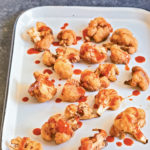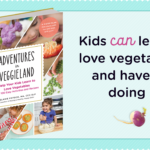An excerpt from Epic Tomatoes, available everywhere books are sold!
Texture
Another aspect of ripeness is a softening of the flesh: give the tomato a gentle squeeze. Though a yielding of the flesh is a good general guideline, some varieties, particularly some of the more modern hybrids, are bred to be particularly firm, and even fully colored specimens will feel surprisingly firm.
Aroma
I’ve watched many shoppers at farmers’ markets pick up tomatoes and smell them. Personally, I get little to no aroma from tomatoes (they are very different from slip melons, such as cantaloupes, in this regard); often, a strong smell associated with a ripe tomato is indicative of impending spoilage. Of course, each person “smells” differently, so others will have quite a different opinion or experience than mine.
Ripeness by Color
Tomato colors are determined by the genes of each variety. The relationship between a particular tomato variety’s color potential and ripeness level is something best learned through experience. The particular mixture of carotenoids in the tomato flesh, including lycopene (yellow, orange, and red, as well as red and yellow bicolored types), and chlorophyll (green, which also contributes to the so-called “black” tomatoes), when overlaid with clear, yellow, or striped skin, determines the apparent ripe color of the tomato.
An important thing to remember is that the temperature tomatoes experience when ripening can significantly affect the color. Fruits that are exposed to midsummer sun may develop the pale and withered coloring indicative of sunscald. A red tomato that ripens at temperatures above 85°F will not develop a rich, deep pigment and will appear a washed-out pink or even yellow.
Most gardeners are familiar with the color journey of red tomatoes on their way to ripeness. But when growing tomatoes of other colors for the first time, it can be confusing for the gardener to know the right time to pick. Many a customer has told me, “I didn’t know when to pick the tomatoes because they never turned red, and I think they just rotted on the vine.” That is a shame, because many of the unusually colored tomatoes are among the very best in flavor.
It is also worth noting that tomatoes are edible along a continuum of apparent ripeness, from just past blush (fully colored, though perhaps paler than the fully ripened specimen) to as deep a color as the tomato reaches prior to the onset of rotting. When you throw in the factor of the uniqueness of each variety in terms of optimum ripeness, as well as variations from season to season, it becomes a matter of tasting to decide what you like, and when you will like it best with regard to picking time.
 Epic Tomatoes
Epic Tomatoes
by Craig LeHoullier
Savor your best tomato harvest ever! Craig LeHoullier, tomato adviser for Seed Savers Exchange, offers everything a tomato enthusiast needs to know about growing more than 200 varieties of tomatoes — from sowing seeds and planting to cultivating and collecting seeds at the end of the season. He also offers a comprehensive guide to the various pests and diseases of tomatoes and explains how best to avoid them.
No other book offers such a detailed look at the specifics of growing tomatoes, with beautiful photographs and helpful tomato profiles throughout.
GET THE BOOK: Amazon | B&N | ebooks.com | Google Play | iBooks | Kobo





